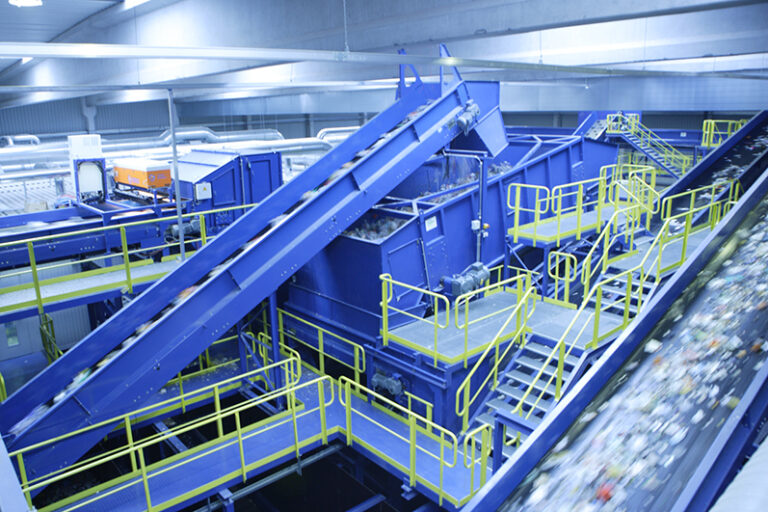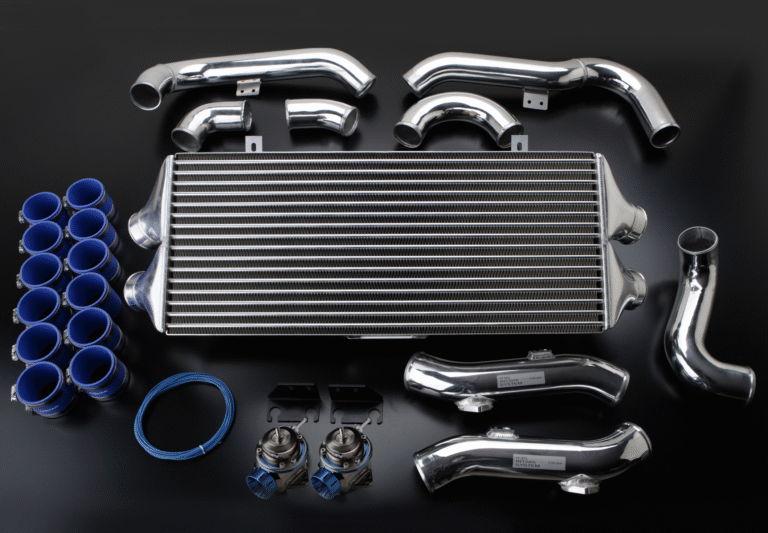The Future of Recycling Equipment: How Automation is Enhancing Waste Processing
Introduction
As global waste production continues to rise, efficient recycling has become an urgent necessity. Traditional recycling methods, while effective, often involve high labor costs, inefficiencies, and environmental concerns. The integration of automation and advanced technology into recycling equipment is revolutionizing waste processing, making it faster, more accurate, and cost-effective. This article explores how automation is shaping the future of recycling equipment, improving sorting accuracy, increasing efficiency, reducing waste, and driving sustainability.
Advanced Sorting Technologies
According to a Recycling Equipment Market report, the industry is expected to grow significantly in the coming years.
One of the most significant advancements in automated recycling equipment is the development of high-tech sorting systems. Traditional sorting methods rely heavily on manual labor, leading to inconsistencies and inefficiencies. However, modern recycling facilities now incorporate AI-driven robotic sorting systems, optical sorters, and sensor-based separation techniques that significantly improve sorting accuracy.
AI and Machine Learning in Sorting Artificial intelligence (AI) and machine learning algorithms are being used to recognize and categorize different types of materials. These systems can identify plastic, paper, metal, and glass with remarkable accuracy, reducing contamination in recycling streams. AI-powered robots can process large volumes of waste at high speeds, ensuring that valuable materials are recovered efficiently.
Optical and Sensor-Based Sorting Optical sorters use infrared, X-ray, and other sensors to detect and separate materials based on their composition and color. These advanced sorting techniques enable the automated identification of different plastics, metals, and glass, streamlining the recycling process. For example, near-infrared (NIR) spectroscopy allows for the differentiation of plastics, ensuring that high-quality recyclates are produced.
Robotics and Automated Processing
The use of robotics in waste processing is transforming recycling facilities into high-efficiency operations. Automated robotic arms equipped with advanced sensors and AI capabilities can quickly identify, pick, and sort materials with greater precision than human workers.
Automated Waste Picking Systems Recycling robots equipped with machine vision and AI-driven decision-making capabilities can sort waste based on predefined criteria. These systems not only speed up sorting but also reduce labor costs and workplace injuries. Robots can operate 24/7, ensuring continuous processing without human fatigue.
Shredding and Compaction Automation Advanced recycling equipment includes automated shredders and compactors that break down waste materials into smaller, manageable sizes. These machines optimize space in recycling facilities, reduce transportation costs, and prepare materials for further processing. Automated balers and compactors increase efficiency by reducing the volume of recyclables and improving logistics.
Smart Waste Management Systems
Automation is not limited to sorting and processing; it also extends to smart waste management systems that enhance efficiency across the entire recycling chain. These intelligent systems use IoT (Internet of Things) connectivity and data analytics to optimize waste collection, monitoring, and processing.
IoT-Enabled Recycling Bins Smart recycling bins equipped with sensors and connectivity can detect when they are full and send alerts for collection. This reduces unnecessary pickups, lowers fuel consumption, and optimizes collection routes, ultimately reducing carbon emissions and operational costs.
Real-Time Monitoring and Data Analytics Modern recycling facilities leverage real-time monitoring systems that track equipment performance, waste composition, and processing efficiency. Data analytics help optimize operations, predict maintenance needs, and improve overall system performance. By analyzing waste trends, municipalities and industries can develop more effective recycling strategies.
Energy Efficiency and Sustainability
Automation is also driving sustainability by making recycling processes more energy-efficient. New generation recycling equipment is designed to consume less power while maximizing material recovery rates. Smart energy management systems further optimize electricity usage, reducing operational costs and carbon footprints.
Sustainable Material Recovery Automated recycling equipment enhances material recovery rates by reducing contamination and ensuring better-quality recyclables. Improved sorting accuracy leads to higher purity levels in recovered materials, making them more valuable and easier to reintroduce into the manufacturing cycle.
Reducing Landfill Waste By increasing efficiency in sorting and processing, automated recycling equipment helps divert more waste from landfills. This not only conserves landfill space but also reduces methane emissions and environmental pollution, contributing to a circular economy.
Challenges and Considerations
Despite its many benefits, the integration of automation into recycling equipment comes with challenges. The initial investment costs for AI-driven systems, robotics, and smart waste management technology can be high. Additionally, maintaining and upgrading these systems requires skilled personnel and ongoing technological advancements.
Cost and Infrastructure Investment Recycling facilities must invest in new infrastructure and training programs to ensure that workers can effectively operate and maintain automated equipment. However, long-term benefits such as reduced labor costs, improved efficiency, and higher material recovery rates often justify these investments.
Adaptation and Workforce Transition As automation reduces the need for manual labor in waste sorting, recycling companies must focus on workforce transition strategies. This includes retraining employees for higher-skilled roles, such as equipment maintenance, programming, and data analysis.
The Future of Automated Recycling
The future of recycling equipment lies in continued innovation and integration with emerging technologies. Advancements in AI, robotics, IoT, and blockchain technology will further enhance waste processing capabilities.
AI-Driven Decision Making Future AI systems will be capable of making real-time decisions to optimize sorting and material recovery dynamically. These self-learning algorithms will continuously improve efficiency by adapting to new waste compositions and evolving recycling standards.
Blockchain for Waste Traceability Blockchain technology is emerging as a tool for ensuring transparency and traceability in recycling supply chains. By recording data on material origins, processing steps, and final usage, blockchain can improve accountability and incentivize responsible recycling practices.
Conclusion
Automation is revolutionizing the recycling industry by enhancing waste processing efficiency, improving sorting accuracy, and reducing environmental impact. As AI, robotics, and smart waste management systems continue to advance, recycling facilities will become more efficient and sustainable. Despite the challenges of implementation, the long-term benefits of automation in recycling equipment will lead to a more circular economy, reduced landfill waste, and a cleaner environment. Embracing these technological innovations is essential for shaping the future of waste processing and ensuring a more sustainable planet.
























